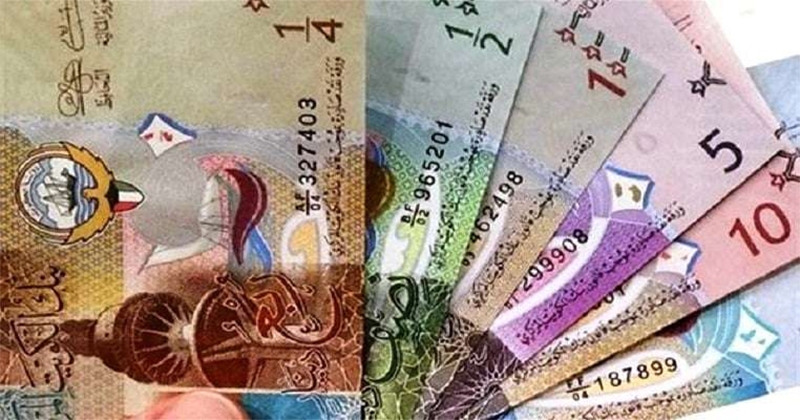Introduction
Kuwait, a country known for its rich oil reserves and vibrant culture, boasts a currency that reflects its economic stability and global significance. The Kuwaiti Dinar (KWD) is not only the highest-valued currency globally, but it also holds a unique charm for those dealing with international finance.
- Kuwait Currency Overview: The Kuwaiti Dinar, denoted by the ISO code KWD, is the official currency of Kuwait. Introduced in 1961, it replaced the Indian Rupee, emphasizing Kuwait’s economic independence. Known for its stable exchange rate, the Dinar is subdivided into 1,000 fils, providing a versatile range for various transactions.
- Kuwait Currency Symbol: The symbol of the Kuwaiti Dinar is a reflection of the nation’s heritage and culture. It features the Arabic script for “Kuwait” accompanied by geometric patterns, creating a visually striking representation of the currency’s identity.
- Kuwait Currency in India: Understanding the exchange rates between Kuwait currency and the Indian Rupee (INR) is crucial for those involved in international trade or travel. The value of the Kuwaiti Dinar against the Indian Rupee fluctuates based on global economic factors and geopolitical events.
- Exchange Rate Dynamics: The exchange rate between Kuwaiti Dinar and Indian Rupee is influenced by factors like economic indicators, interest rates, and geopolitical stability. Investors and businesses keen on dealing with Kuwaiti currency regularly monitor these dynamics to make informed financial decisions.
- Kuwait Currency to INR: Current Exchange Rates: Keeping abreast of the latest exchange rates is essential for anyone engaged in transactions involving Kuwait currency to INR. Various financial platforms and currency converters provide real-time information, ensuring accuracy in financial planning and transactions.
- Factors Influencing Exchange Rates: Several factors influence the exchange rates between Kuwait currency and the Indian Rupee. These include economic indicators, inflation rates, political stability, and global market trends. Understanding these factors enables businesses and individuals to navigate currency fluctuations effectively.
- 1000 Kuwait Currency in Indian Rupees: For those wondering about the value of 1000 Kuwaiti Dinars in Indian Rupees, the exchange rate plays a pivotal role. As exchange rates are dynamic, it is advisable to check with reliable financial sources or currency converters to obtain the most accurate and up-to-date conversion.
- Currency Conversion Process: Currency conversion involves a systematic process facilitated by financial institutions, currency exchange agencies, or online platforms. Understanding this process is crucial for individuals or businesses engaged in cross-border transactions.
- Impact on Travel and Trade: The exchange rate dynamics between Kuwait currency and the Indian Rupee have a direct impact on travel expenses and trade relations. Travelers and businesses must assess the current rates to make informed decisions regarding budgeting and financial planning.
- Economic Significance of Kuwait Currency: The robustness of Kuwait’s economy and its reliance on oil exports contribute to the strength of its currency. The Kuwaiti Dinar’s high valuation is a testament to the economic stability maintained by the country, attracting global investors and establishing it as a prominent player in the financial landscape.

Conclusion
In conclusion, the Kuwaiti Dinar stands as a symbol of economic strength and stability. Its journey from the replacement of the Indian Rupee to becoming the highest-valued currency globally is a testament to Kuwait’s economic prowess. For individuals and businesses involved in transactions between Kuwait currency and the Indian Rupee, staying informed about exchange rates and economic factors is crucial for making sound financial decisions.
Frequently Asked Questions (FAQs)
- How did the Kuwaiti Dinar replace the Indian Rupee? Answer: The Kuwaiti Dinar (KWD) replaced the Indian Rupee in 1961 when Kuwait gained economic independence. This transition marked a significant shift in the country’s economic landscape, emphasizing its sovereignty.
- What is the significance of the Kuwait Currency Symbol? Answer: The symbol of the Kuwaiti Dinar reflects the nation’s heritage and culture. It features the Arabic script for “Kuwait” accompanied by geometric patterns, creating a visually striking representation of the currency’s identity. This symbolism is deeply rooted in Kuwait’s rich cultural history.
- How does the exchange rate between Kuwait Currency and Indian Rupee fluctuate? Answer: The exchange rate dynamics are influenced by factors such as economic indicators, interest rates, geopolitical stability, and global market trends. Investors and businesses monitor these factors to make informed financial decisions regarding dealing with Kuwaiti currency.
- What is the current value of 1000 Kuwait Currency in Indian Rupees? Response: Due to the fluctuating nature of exchange rates, the value of 1000 Kuwaiti dinars in Indian rupees is subject to change. If you want the most exact and recent conversion, it is best to verify with reputable financial sources or currency converters.
- What is the effect of Kuwait’s currency’s economic significance on investors around the world? Kuwait’s currency has strength due in part to the country’s strong economy and dependence on oil exports. The Kuwaiti dinar’s high valuation attracts international investors, solidifying Kuwait’s position as a major player in the global financial scene.

